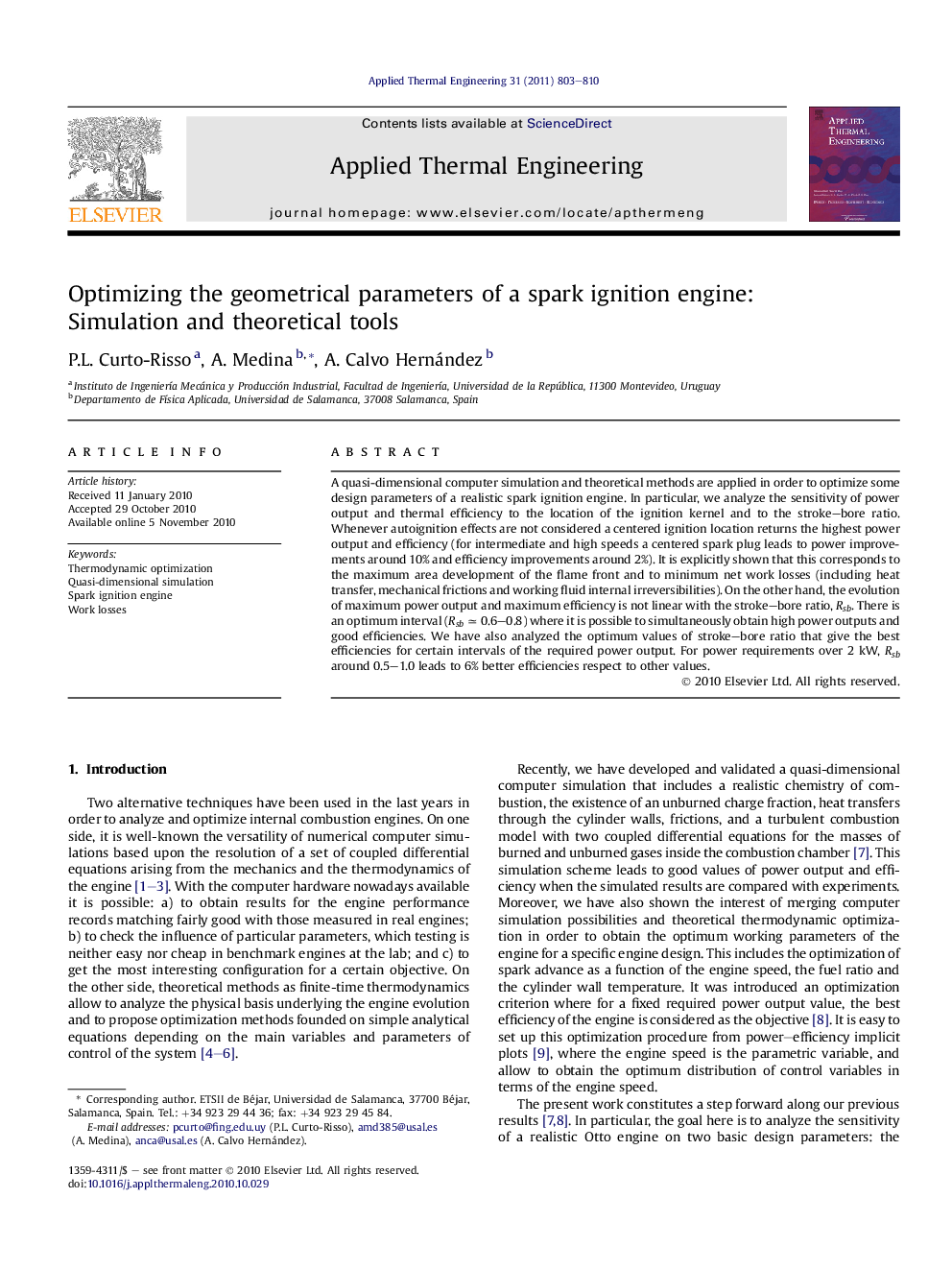| Article ID | Journal | Published Year | Pages | File Type |
|---|---|---|---|---|
| 10390521 | Applied Thermal Engineering | 2011 | 8 Pages |
Abstract
A quasi-dimensional computer simulation and theoretical methods are applied in order to optimize some design parameters of a realistic spark ignition engine. In particular, we analyze the sensitivity of power output and thermal efficiency to the location of the ignition kernel and to the stroke-bore ratio. Whenever autoignition effects are not considered a centered ignition location returns the highest power output and efficiency (for intermediate and high speeds a centered spark plug leads to power improvements around 10% and efficiency improvements around 2%). It is explicitly shown that this corresponds to the maximum area development of the flame front and to minimum net work losses (including heat transfer, mechanical frictions and working fluid internal irreversibilities). On the other hand, the evolution of maximum power output and maximum efficiency is not linear with the stroke-bore ratio, Rsb. There is an optimum interval (Rsb â 0.6-0.8) where it is possible to simultaneously obtain high power outputs and good efficiencies. We have also analyzed the optimum values of stroke-bore ratio that give the best efficiencies for certain intervals of the required power output. For power requirements over 2 kW, Rsb around 0.5-1.0 leads to 6% better efficiencies respect to other values.
Related Topics
Physical Sciences and Engineering
Chemical Engineering
Fluid Flow and Transfer Processes
Authors
P.L. Curto-Risso, A. Medina, A. Calvo Hernández,
